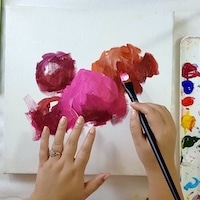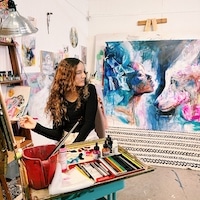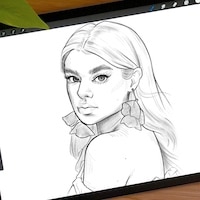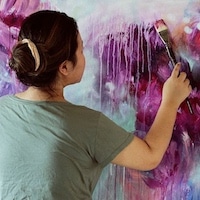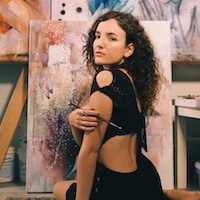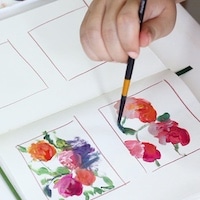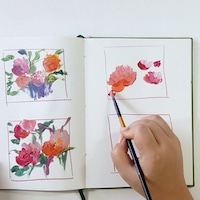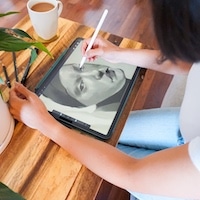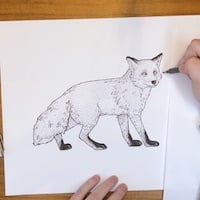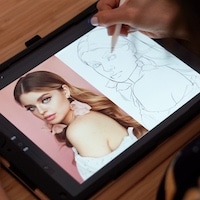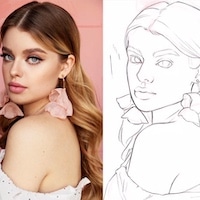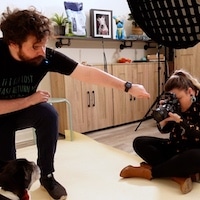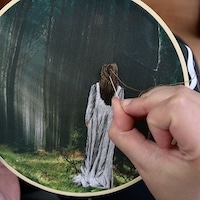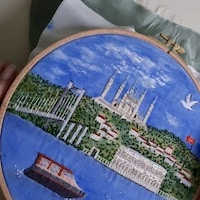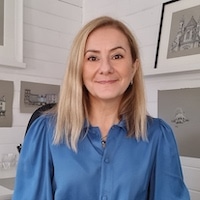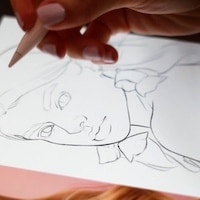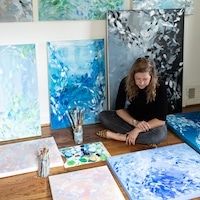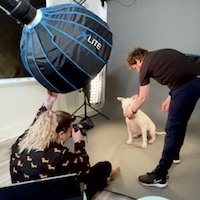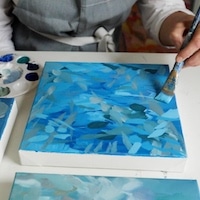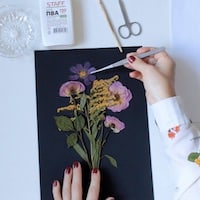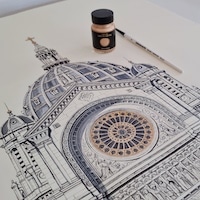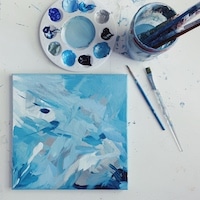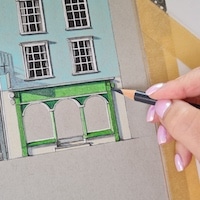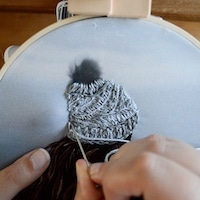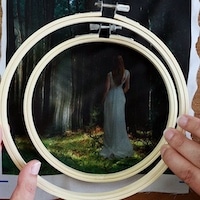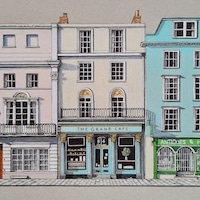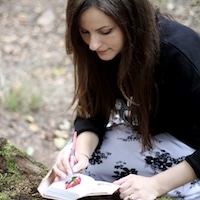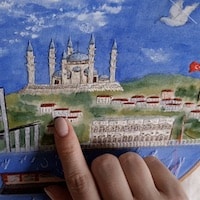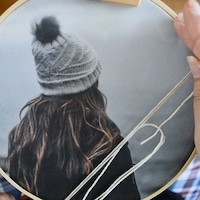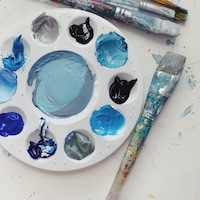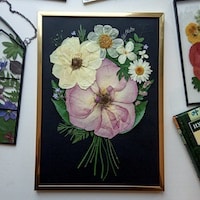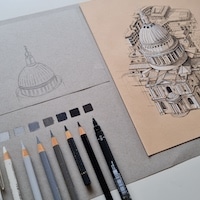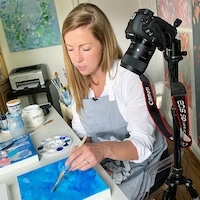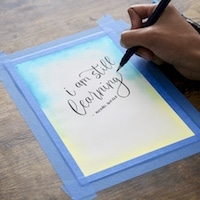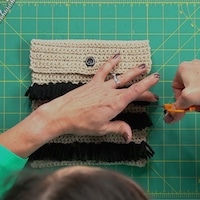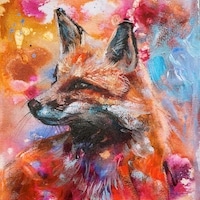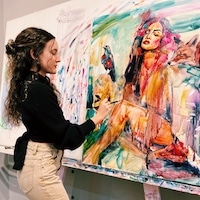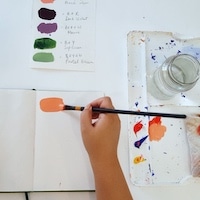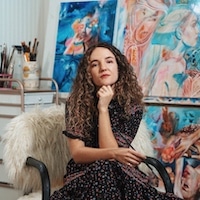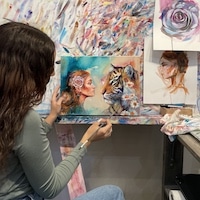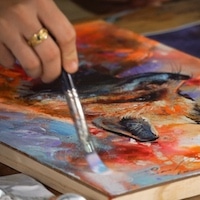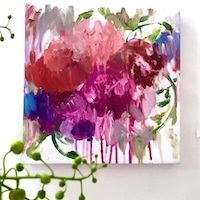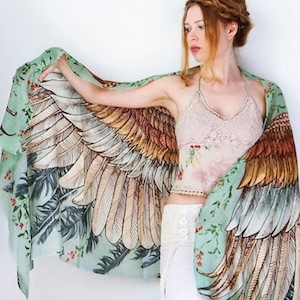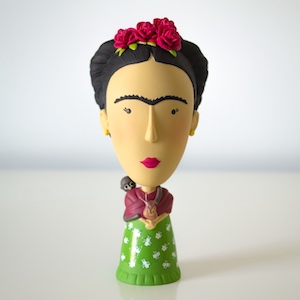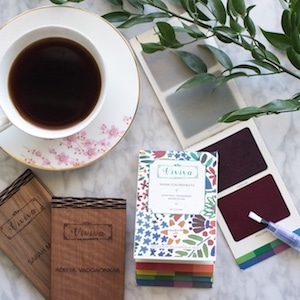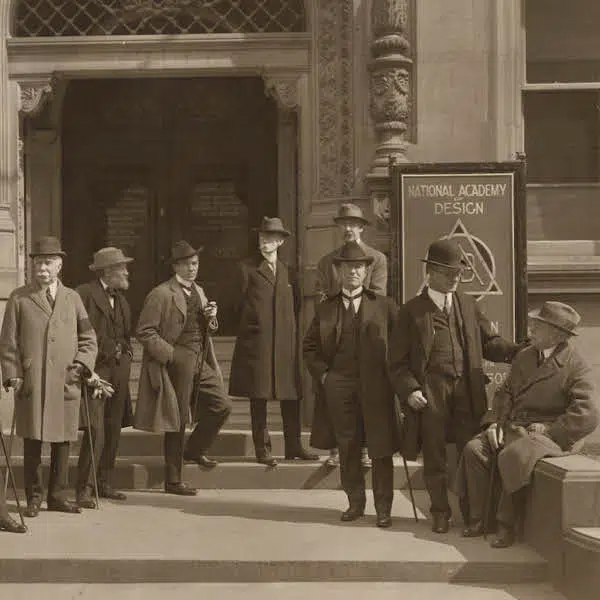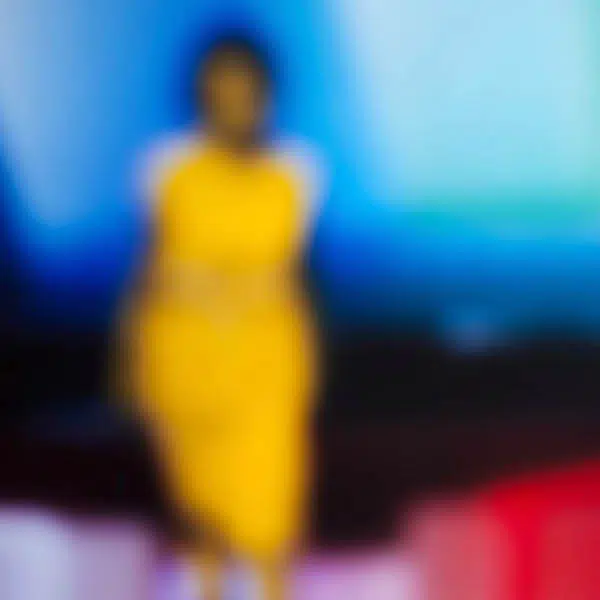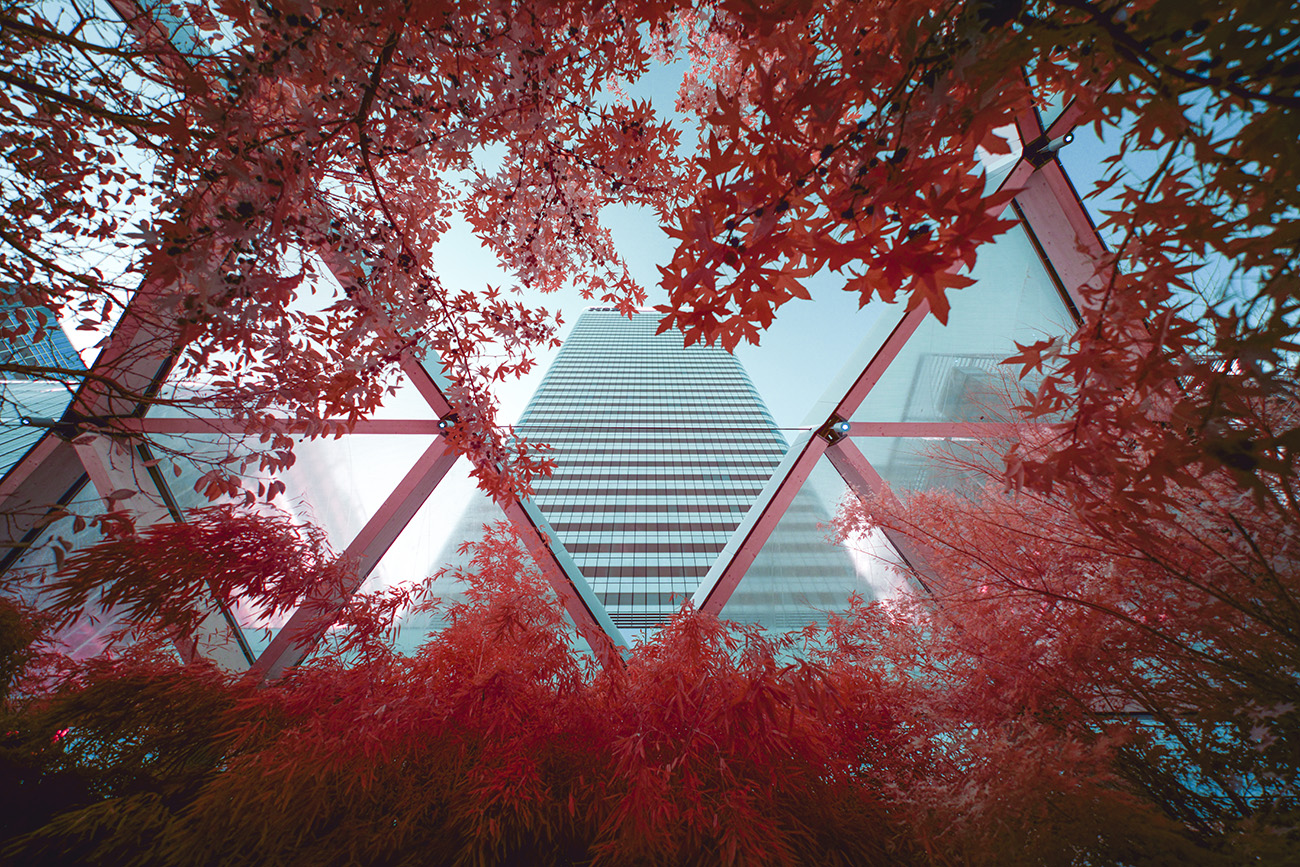
Photographer and filmmaker Tobi Shinobi is a storyteller. Based between Chicago and London, he weaves powerful narratives using both still photographs and video. With his series Blood on the Leaves, Shinobi has turned to infrared photography to reveal the unseen. In doing so, he makes a powerful statement about the marginalization of people of color—specifically Black people.
However, Blood on the Leaves is not merely a series of still images. To fully bring his vision to life, Shinobi has thoughtfully incorporated technology like AI and augmented reality. Using AI, Shinobi was able to animate his selected imagery, and through augmented reality, viewers can hear his voice after scanning the images with their phones. In doing so, they gain rare insight into his creative process.
The merging of creative techniques has produced a work that straddles the line between photography and filmography. In a way, this is also a metaphor for Shinobi's own creative journey, as he dives more into filmmaking. We had the chance to speak with Shinobi about his love for the visual arts and how the concept for Blood on the Leaves came about. Read on for My Modern Met's exclusive interview.
What does your love of photography stem from?
I’ve always been obsessed with seeing things differently. Photography, for me, is primarily about documenting the world, but beyond that, it’s about capturing what’s hidden in plain sight—whether that’s a structure, a shadow, or a story encapsulated in a moment. It’s a way to get people to stop, reconsider, and challenge how they engage with their surroundings. I gravitate toward balance—light and dark, stillness and movement, structure and chaos—and photography is my way of balancing out that tension. Above all, it’s a tool to tell stories that might otherwise go unseen.
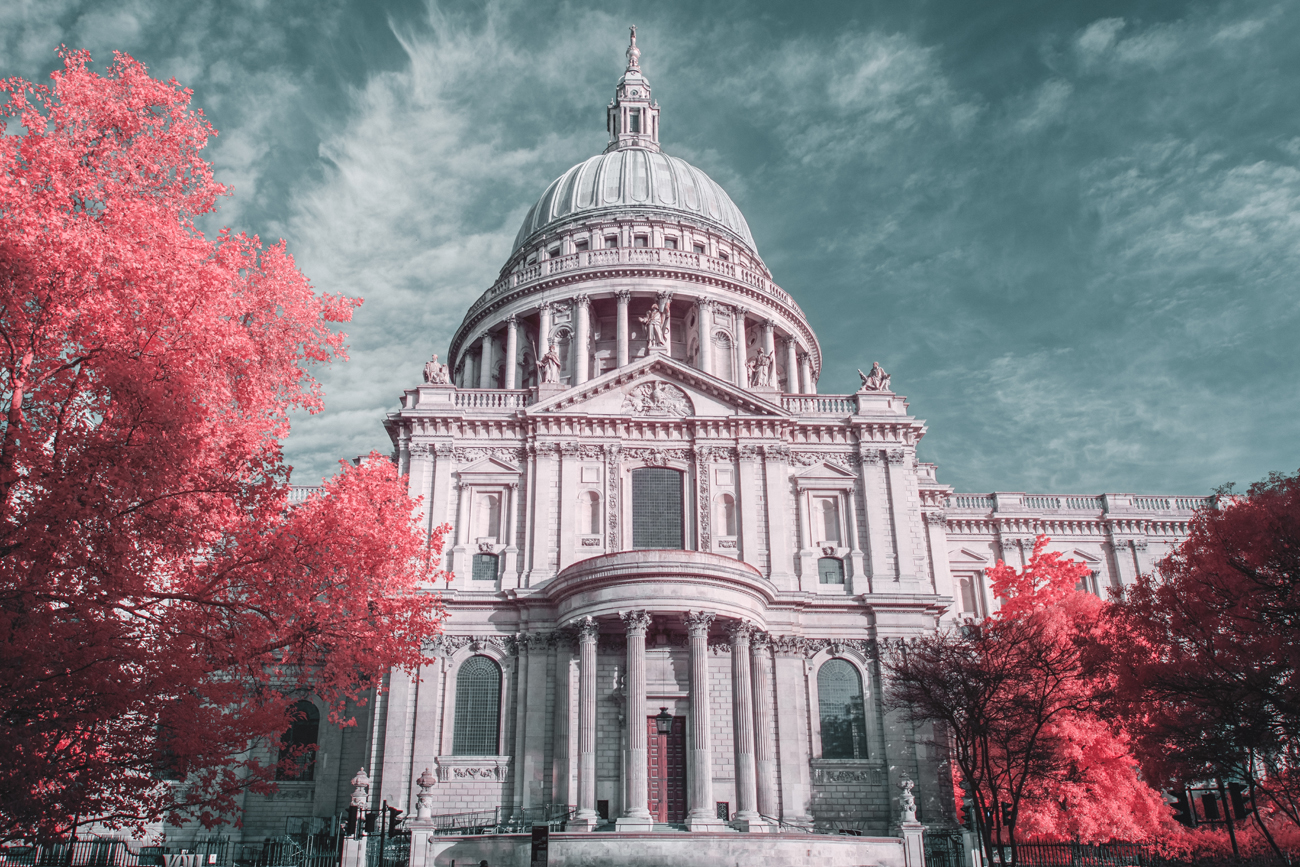
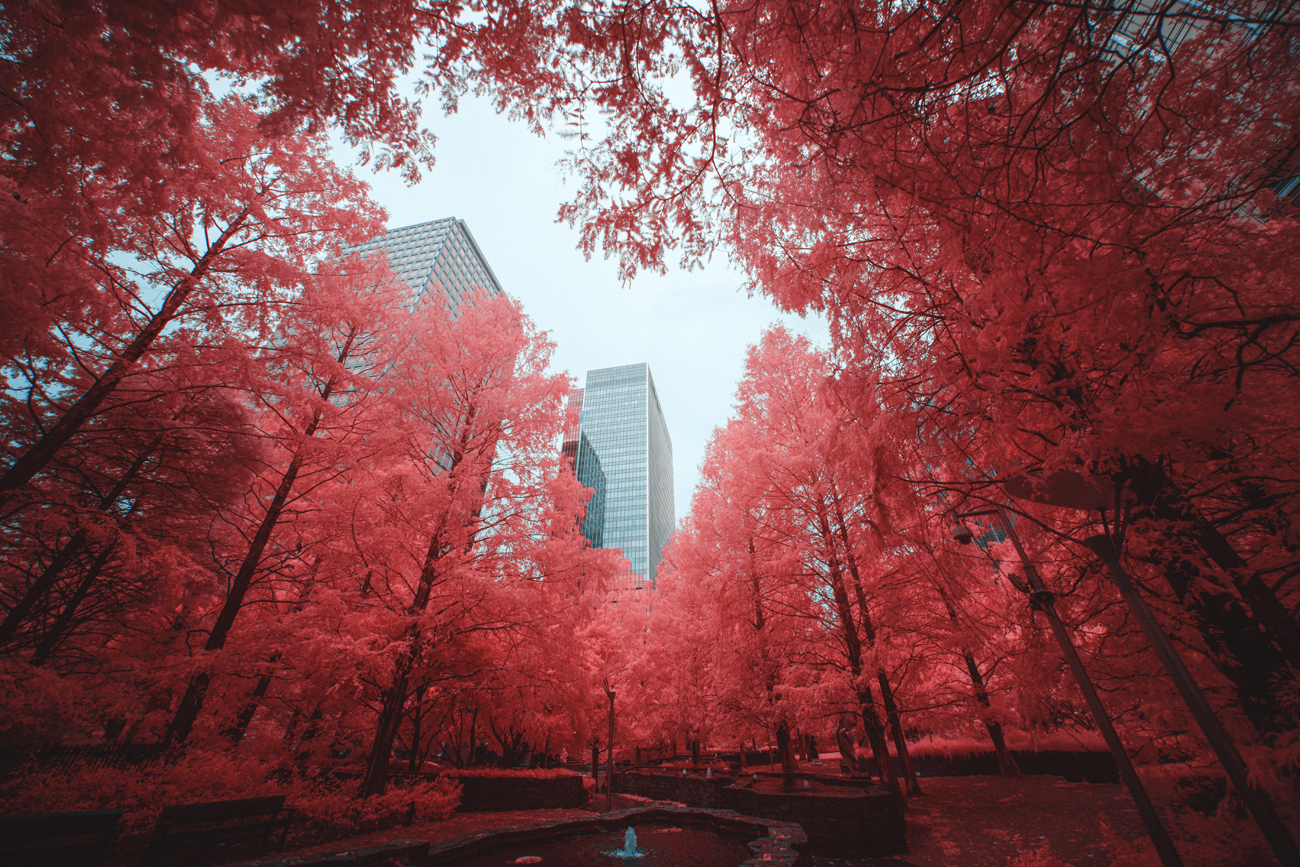
What do you enjoy about the creative possibilities of infrared photography?
Infrared strips away the expected. It transforms the ordinary into something somewhat mythical, otherworldly, yet still deeply real. What I love most is how it makes you rethink visibility. It exposes what has always been there, just beyond human perception—a perfect metaphor for the stories, histories, and truths I explore in my work.
In Blood on the Leaves, it does something specific. It flips the idea of invisibility on its head. There’s something thought-provoking about making the unseen impossible to ignore.
How did the concept for Blood on the Leaves come about?
I was inversely inspired by a photography colleague who primarily shoots in black and white. I wanted to explore color in a way that felt intentional, that made people think. Around this time, I discovered infrared photography and knew I wanted to use it, but I waited for the right project.
During the pandemic, when we were in lockdown, I had time to reflect on perspective—something that has been central to my artistic practice for a long time. Not just perspective in a literal, visual sense, but in a fractured sense—using my platform to tell other people’s stories. I was thinking about what it means to be an ally, the balance between speaking up for others and knowing when to listen.
Then George Floyd was murdered. I saw images of people who looked like me being harmed, killed, and dehumanized. It was during this time that Blood on the Leaves took form.
Infrared photography requires removing a filter from the camera, allowing it to capture a spectrum of light that is always there but unseen. I decided to use this as a metaphor for people of color, specifically Black people—always present, yet often overlooked.
Blackness exists in a paradox—hyper-visible in certain contexts, erased in others. That tension is what Blood on the Leaves explores visually.
The title references a song, which itself references “Strange Fruit“—a brutal reminder of America’s past. But I wasn’t interested in making a purely historical statement. I wanted to collapse timelines, to show how history lingers in the present, how an untreated wound takes much longer to heal—if it ever does.
Using infrared made sense because it’s literally about revealing what the eye can’t see. This series is about presence—not just representation, but a deeper kind of seeing.
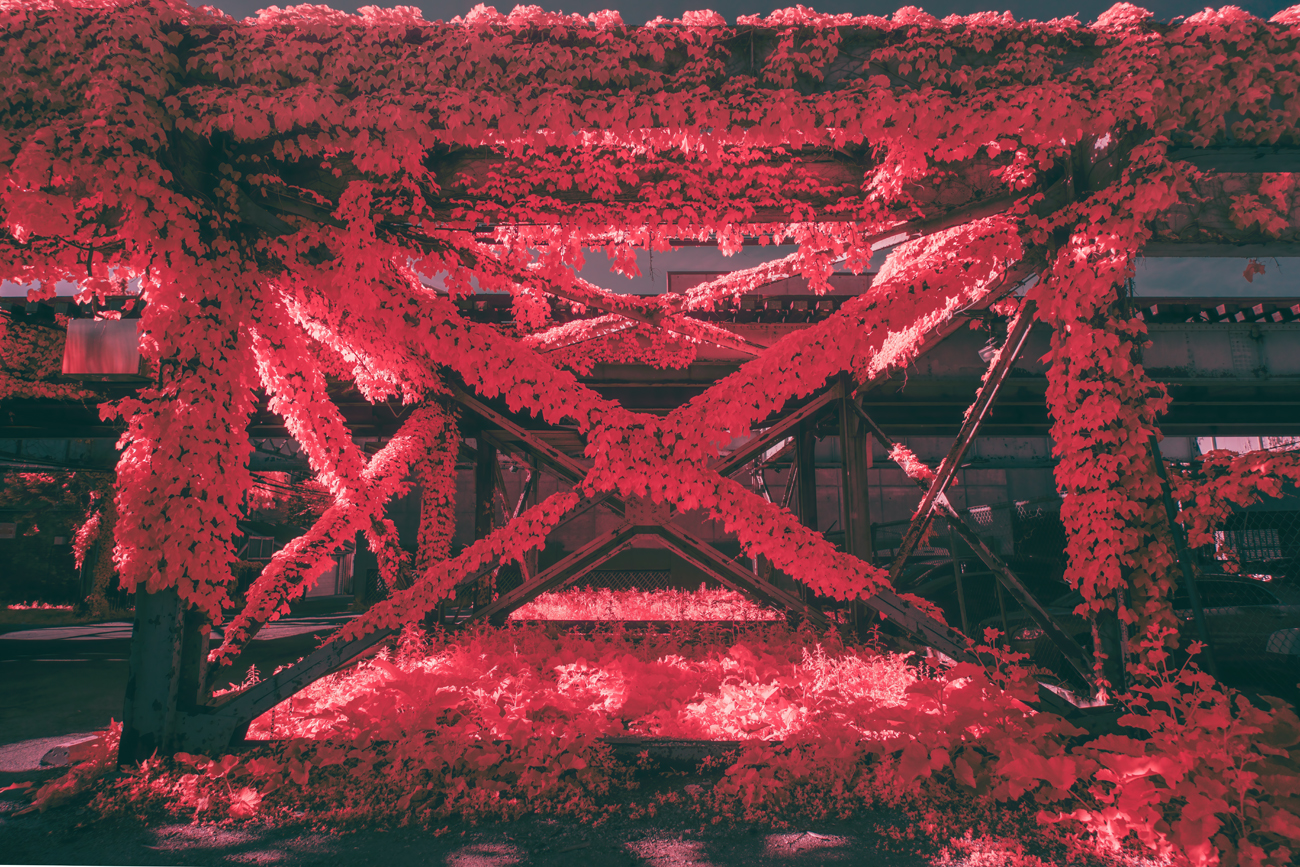
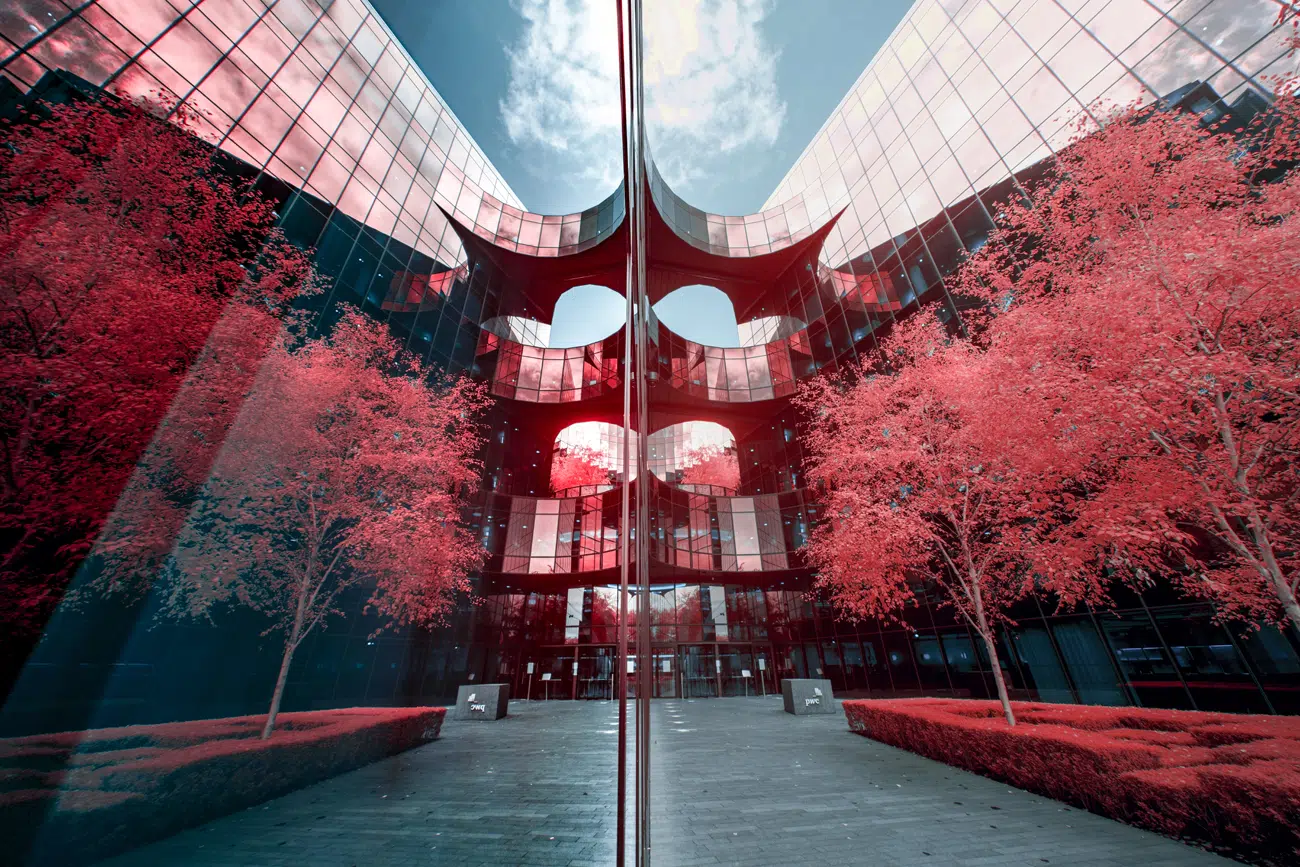
These images are reworkings of some photos from your Shinfrared series. How did you go about selecting which images would become part of Blood on the Leaves?
I selected the strongest images from the Shinfrared series, then used AI to animate them and AR to make them interactive, creating a more cohesive narrative. But even without those elements, they stand strong individually.
I chose images where the contrast was already speaking—where light and shadow, presence and absence, visibility and erasure were already in tension. Some had a ghostly, almost spiritual quality. Others were more direct, demanding to be seen.
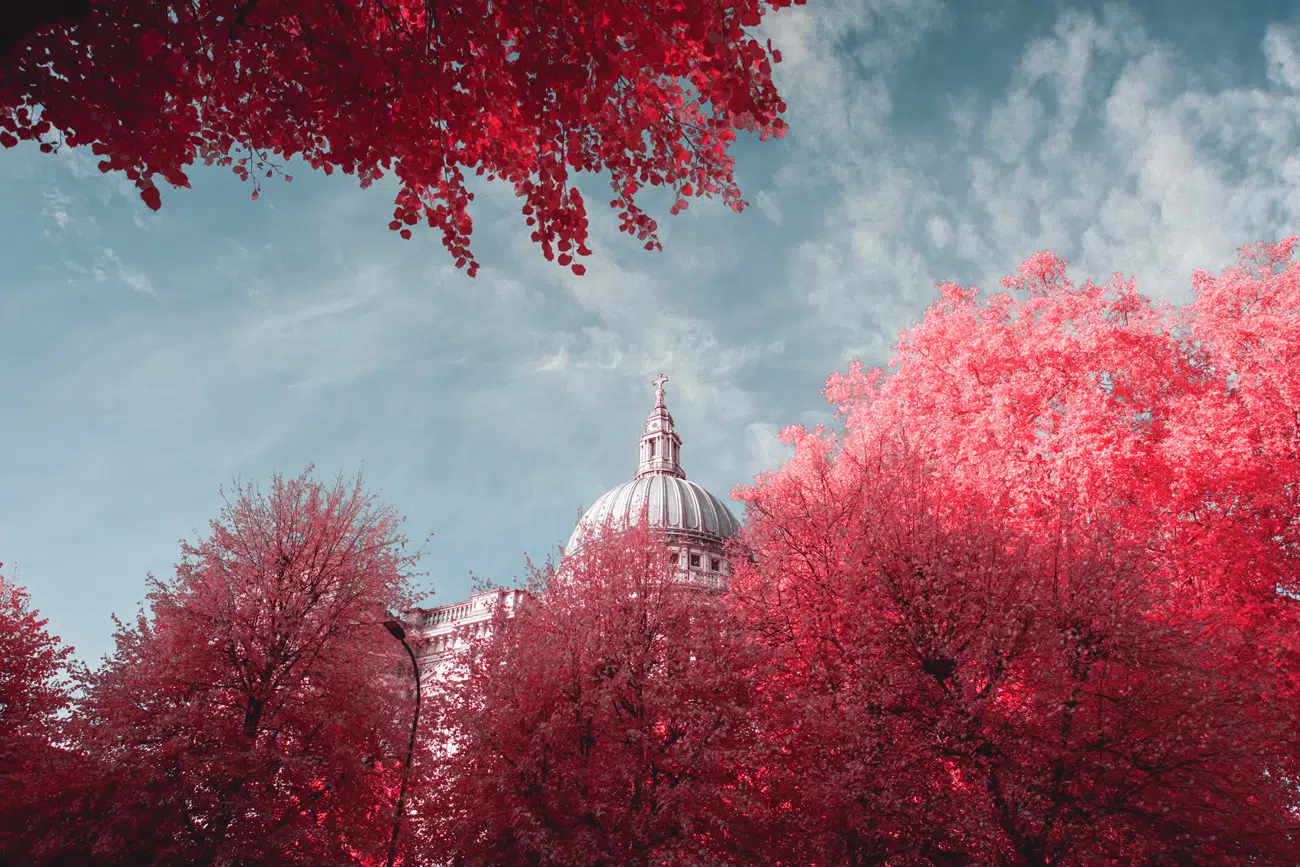
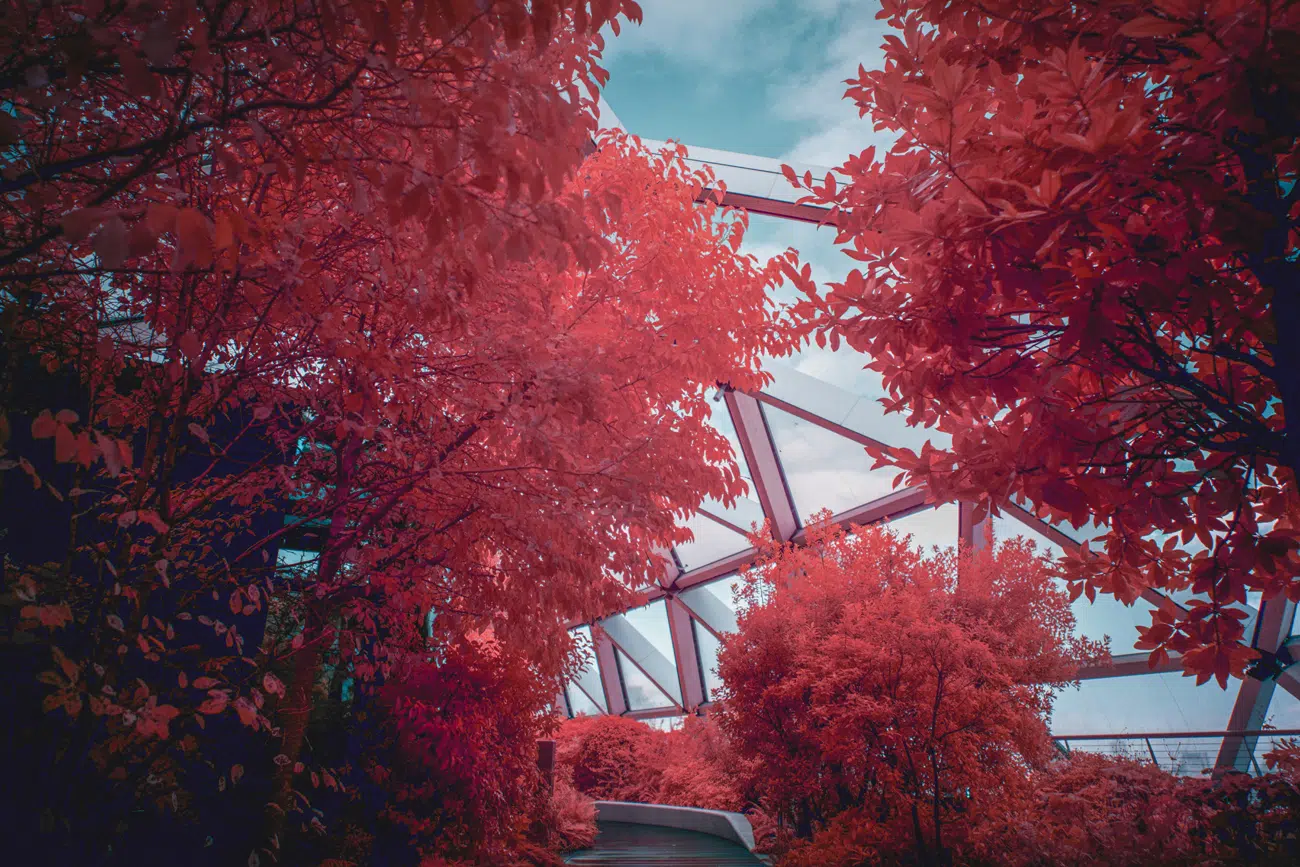
How do you feel that technology can elevate your work as a creator?
Technology lets me pull people deeper into the experience. It removes the limitations of the static image.
A lot of my work focuses on balance, and as someone transitioning from photography to filmmaking, that shift hasn’t always been seamless. Photographers tend to work in short-term gratification, while filmmakers operate on delayed gratification, requiring collaboration and patience. I love both mediums, but they function differently.
Augmented reality allows me to merge stills and motion in a way that satisfies my pursuit of balance.
Pairing photography with movement and sight with sound expands storytelling beyond what is traditionally possible. It allows the audience to step into my process—to see what I see, or at the very least, get a glimpse into what I was thinking at the moment I created the piece.
With Blood on the Leaves, AR allows viewers to hear my voice, step into my process, and engage with the work beyond just looking. AI bridges moments, animating stillness, giving images a new kind of presence.
But at its core, technology allows me to do what I’ve always done—challenge how people see. The more immersive the experience, the harder it is to ignore the story.
What do you hope people take away from this series?
I want to talk about difficult things in a way that is both thoughtful and thought-provoking.
I understand that these conversations aren’t easy, and I might be guilty of using a “spoonful of sugar” approach to controversial topics. But if I can use my visual instincts and color choices to spark meaningful conversations, then that’s exactly what I’ll do.
I want people to be more thoughtful about their surroundings. I want them to consider perspectives outside their own. The world lacks empathy, and if my storytelling can encourage people to be more empathetic, then I’ve done what I set out to do.
This work isn’t about giving answers—it’s about pushing deeper questions.
If someone walks away seeing differently, feeling differently—even for a moment—then the work has done its job.
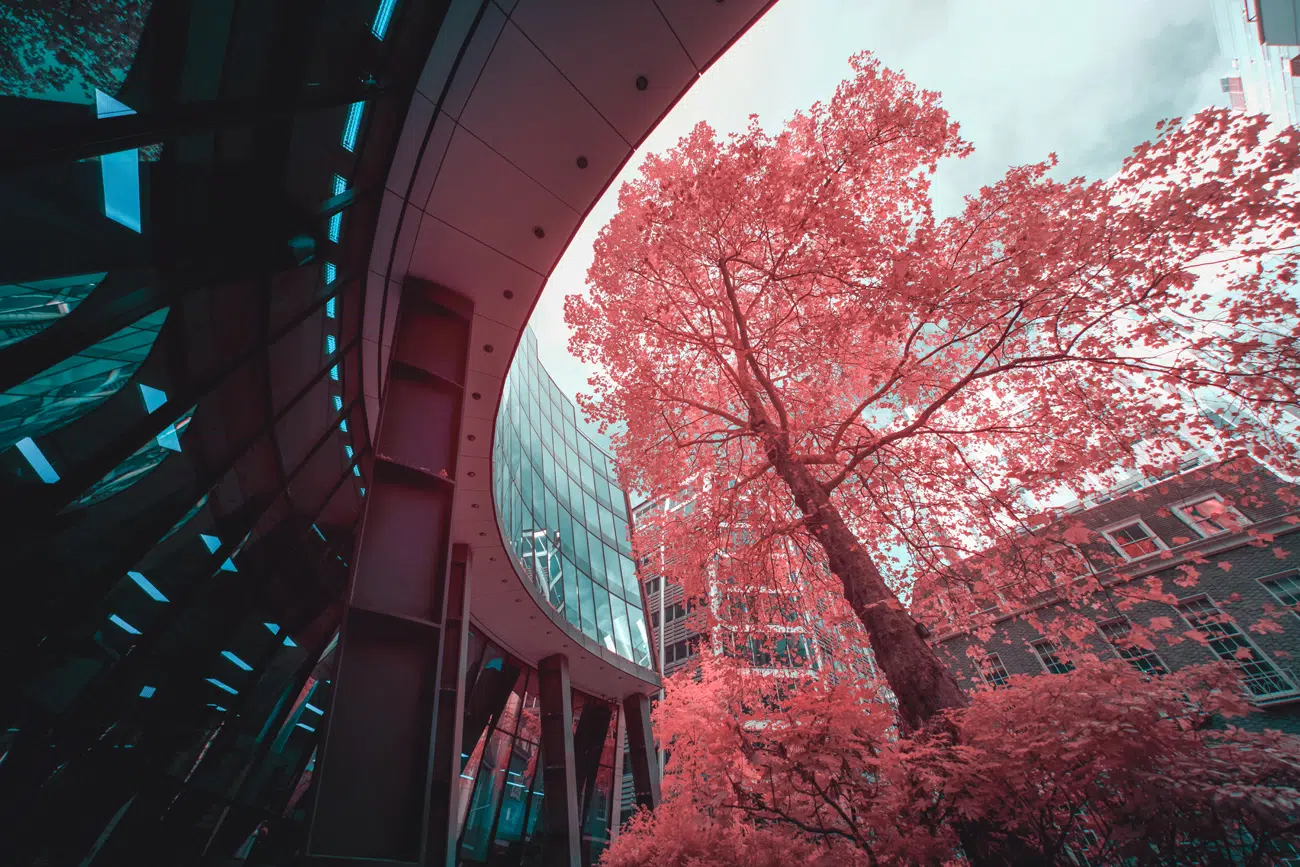
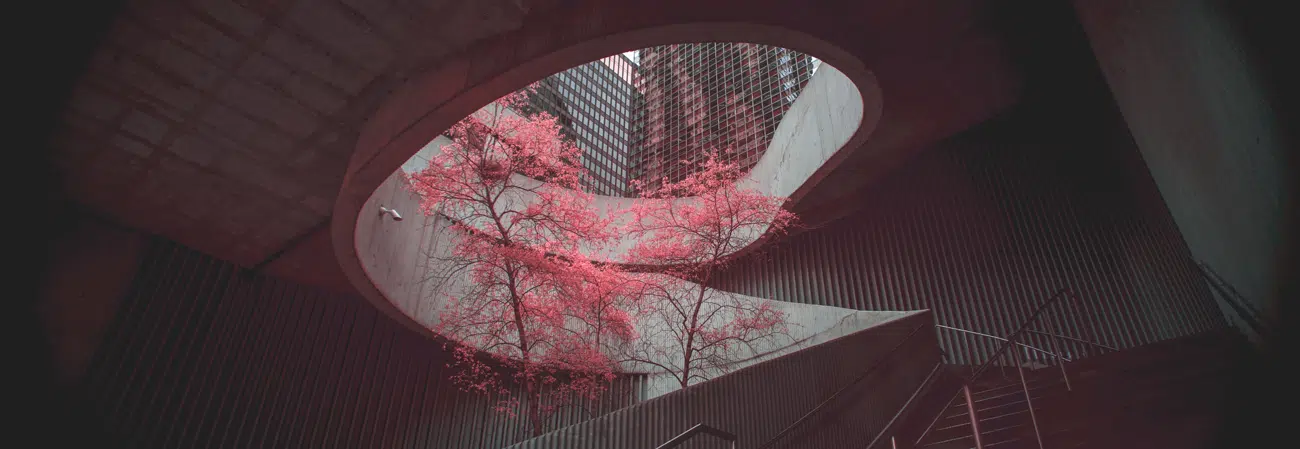
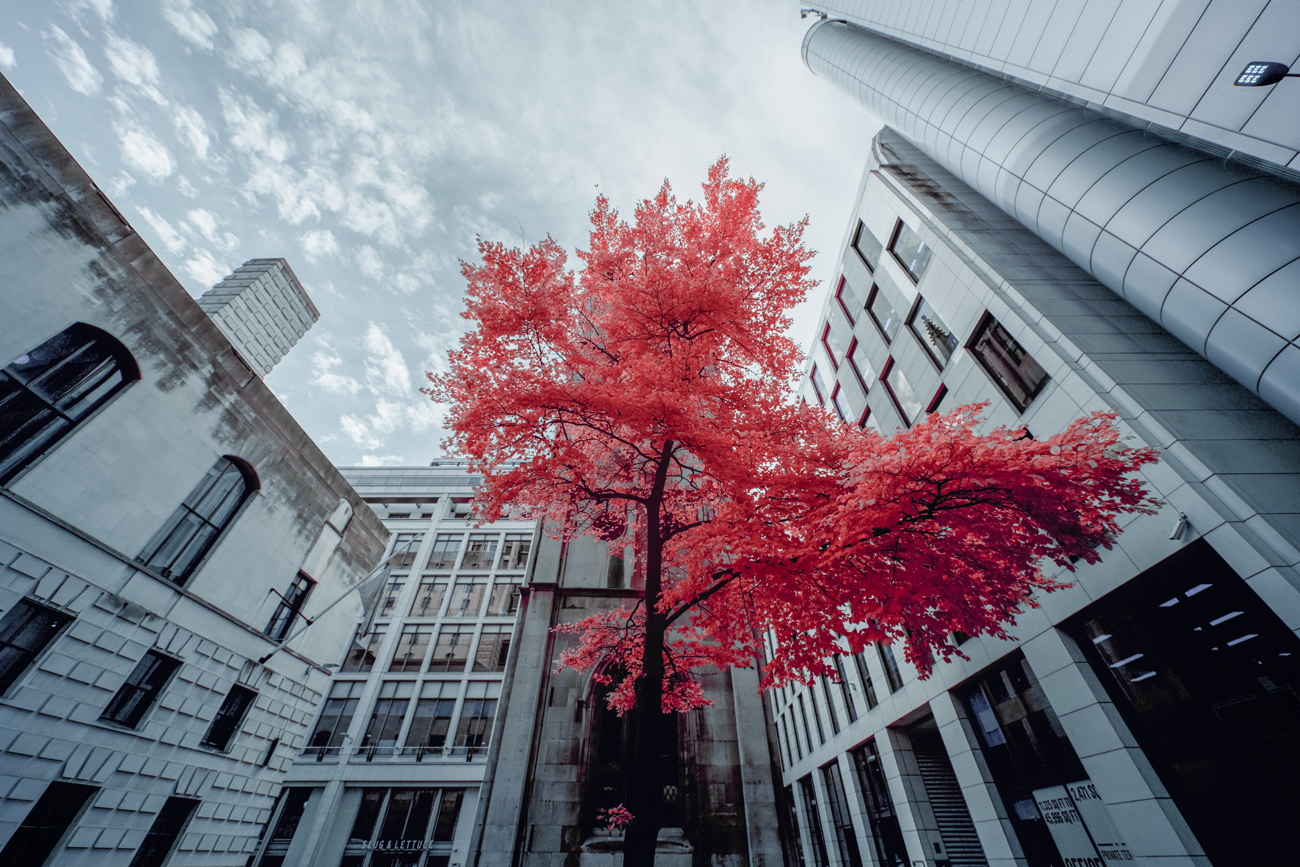
What’s next for you?
Right now, I’m focused on expanding this conversation—visually, narratively, and technically.
I’m pushing Blood on the Leaves and Fractured into larger, more immersive formats, possibly integrating projection mapping, spatial installations, and new ways to interact with the work.
My documentary “Twenty-Five,” created with my long-term collaborator Lonnie Edwards, is another extension of this—using infrared cinematography to explore Chicago’s identity and history. It’s a deeply personal project, and I want to do it right.
Beyond that, I’m making strategic moves to secure gallery representation and develop an interactive AR experience that plays with these ideas of visibility, history, and perspective at an even greater scale.
Everything I’m working on is connected by the same principle: encouraging people to see, to consider their surroundings, and to reflect on the impact they have and the responsibility that comes with it.
Tobi Shinobi: Website | Instagram





